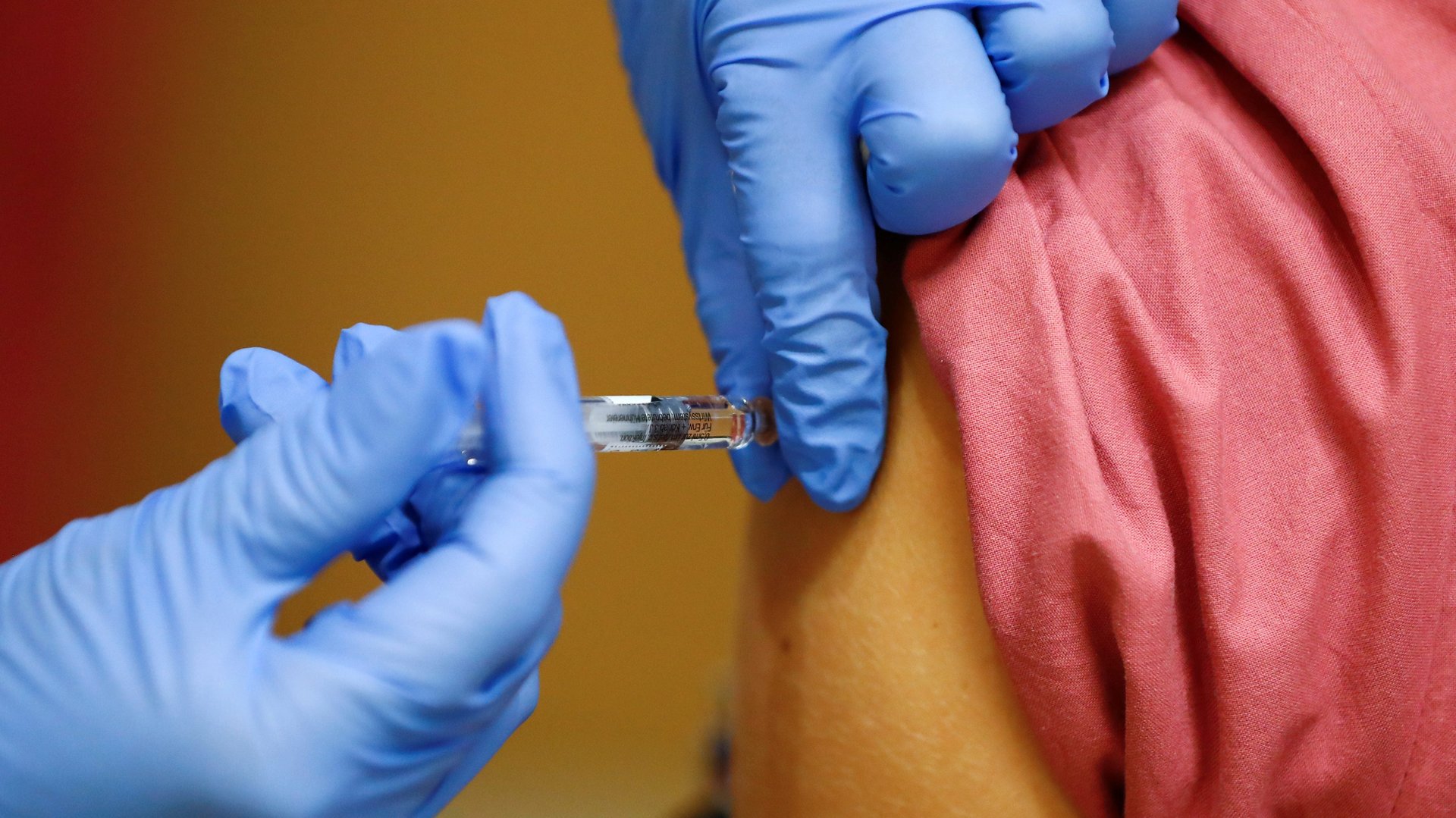How the Moderna Covid-19 vaccine stacks up against Pfizer’s
On the morning of Nov. 16, American pharma company Moderna released results of a key study for its experimental coronavirus vaccine. The results were promising, with an efficacy rate of 94.5%. At the time of publication, Moderna’s stock was up about 8%.


On the morning of Nov. 16, American pharma company Moderna released results of a key study for its experimental coronavirus vaccine. The results were promising, with an efficacy rate of 94.5%. At the time of publication, Moderna’s stock was up about 8%.
Moderna is now the second company to report promising clinical trial results for a Covid-19 vaccine in recent weeks—the other is Pfizer’s, which on Nov. 9 reported 90% efficacy for its vaccine. This means it’s possible that one or both vaccines could be available in the coming months. But how do the two compare? Let’s break it down.
How do they work?
Both the Pfizer and Moderna vaccines are mRNA vaccines, which work differently than other shots available today. Instead of introducing a less virulent form of a pathogen into the body to teach the immune system how to combat it, these new vaccines contain a snippet of the genetic code for the coronavirus’ distinctive spike proteins.
The genetic code acts as a blueprint for your own cells to produce the (harmless) coronavirus protein, against which the body can create antibodies. The effect, then, is similar to that of a traditional vaccine: It equips the body to mount an immune response to attack these proteins—and, thus, the virus—if it is introduced into the body, preventing infection.
How effective and safe are they?
These are the first vaccines of their kind, so researchers weren’t sure how well they would perform. So far, the results—which have not been published in peer-reviewed articles, just in press releases—appear positive.
Both the Pfizer and Moderna vaccines are in phase 3 clinical trials, which have 43,538 and 30,000 participants respectively. Half the participants in each trial are given the vaccine, while the other half receives a placebo. In the Pfizer trial, 94 participants contracted Covid-19, but fewer than nine of those cases were in people who had received the experimental vaccine.
Moderna’s results were slightly better; of the 95 participants in the trial that contracted Covid-19, just five had received the vaccine, resulting in 94.5% efficacy. Eleven of those cases were severe, and all were in the placebo group, a preliminary indication that the vaccine can reduce the intensity of the disease for those who do get it.
These results are better than experts had hoped. Anthony Fauci, the director of the National Institute of Allergy and Infectious Diseases, said he had hoped for a vaccine with an efficacy of 70% to 75%; the US Food and Drug Administration (FDA), responsible for vetting and approving the vaccines for wider use, set a lower limit of 50% efficacy.
It’s important to note that efficacy is not the same as effectiveness. Researchers don’t yet know how the vaccine will behave in the real world, where a broader group of people (of different ages and existing health conditions) will receive the vaccine. The scientists behind the Pfizer and Moderna studies have tried to replicate that at least somewhat, recruiting participants of different ages and ethnic backgrounds.
Both vaccines, which require two injections, appear to elicit few severe side effects. Moderna’s can result in fatigue, headache, and joint pain; for Pfizer’s, side effects are more flu-like and can include muscle pain and fever. Both vaccines caused patients to have injection-site pain.
Another thing the companies don’t yet know: How long the vaccine will be effective. This question is one that can only be answered with time. Clear results will likely only come after the vaccine or vaccines have been approved by the FDA.
Neither study is complete. Both companies will continue to follow their participants to test at least one more endpoint (the first endpoint for the phase 3 trial was simply the number of Covid-19 cases following the second vaccine dose—for Pfizer it was seven days after, for Moderna 14 days after). To reach a high level of certainty in their results, Moderna is looking to see Covid-19 symptoms in at least 150 trial participants, Pfizer in 164—something both companies expect to happen rather quickly, according to their CEOs.
When can I get one?
Both Pfizer and Moderna are likely to seek FDA approval for their vaccines by the end of November. If the FDA does approve one or both vaccines shortly after they’re submitted, the first round of doses could go out before the end of the year. Moderna’s initial supply is enough for 10 million people, Pfizer’s for 15 to 20 million people.
In the US, the federal government has earmarked most of these for frontline workers and the elderly. Vaccines will likely be more widely available a few months into 2021, or by April.
There are questions, though, about how to get those vaccines to the people who need them. The vaccines have to be stored at temperatures much colder than many medical facilities are currently able to provide, -70°C (-94°F) for Pfizer’s and -20°C (-4° F) for Moderna’s. The US Centers for Disease Control and Prevention has advised states not to scramble for ultra-cold freezers quite yet, but as my colleague Katherine Foley writes, a final distribution plan would inevitably be constrained by the locations of medical deep freezers. The situation may be even more challenging in other parts of the world.
By April, though, these two may not be the only vaccines available. Johnson & Johnson, AstraZeneca, and Novavax will soon start or resume their phase 3 trials; dozens of other vaccines are at similar or earlier stages in the pipeline.